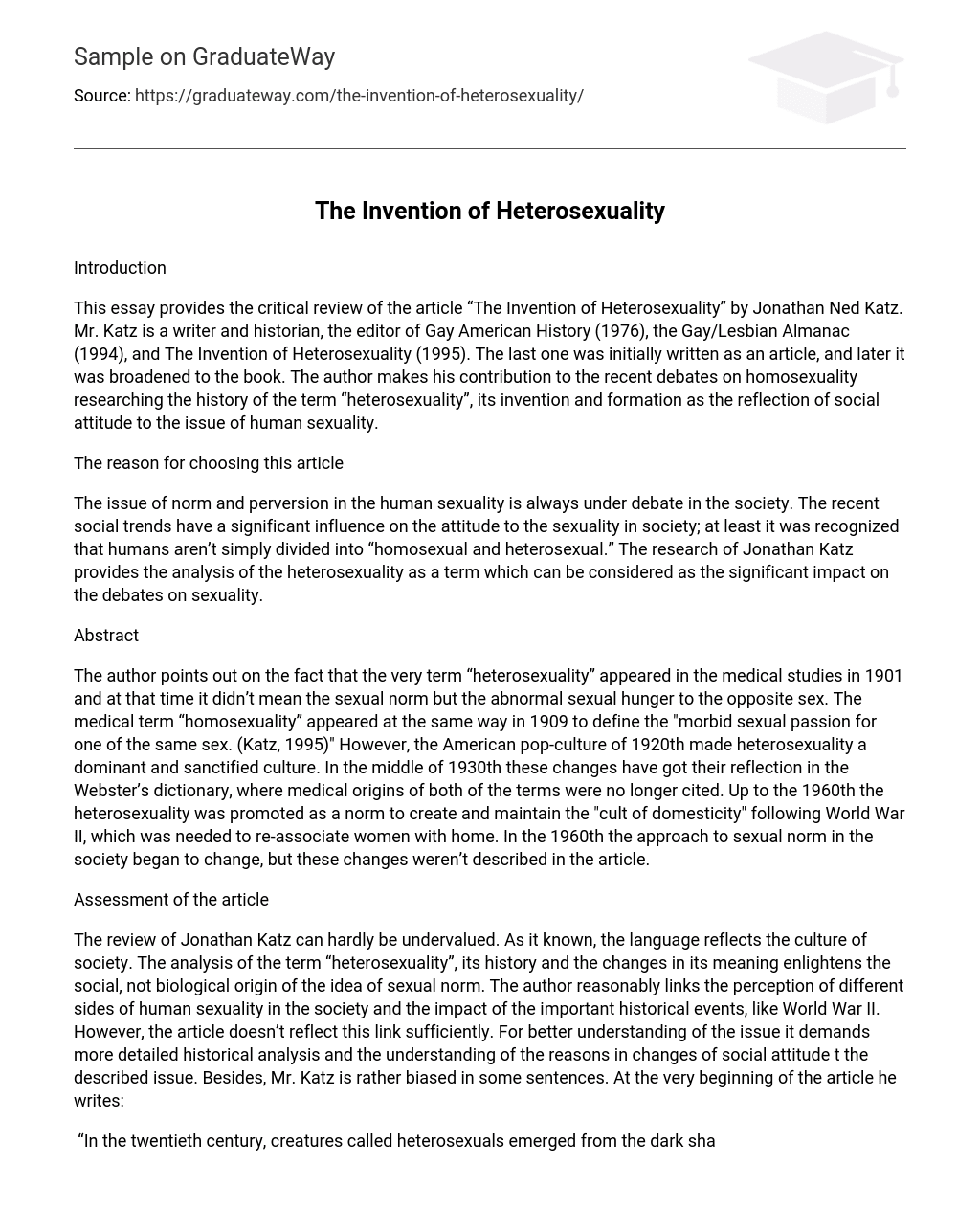Introduction
This essay provides the critical review of the article “The Invention of Heterosexuality” by Jonathan Ned Katz. Mr. Katz is a writer and historian, the editor of Gay American History (1976), the Gay/Lesbian Almanac (1994), and The Invention of Heterosexuality (1995). The last one was initially written as an article, and later it was broadened to the book. The author makes his contribution to the recent debates on homosexuality researching the history of the term “heterosexuality”, its invention and formation as the reflection of social attitude to the issue of human sexuality.
The reason for choosing this article
The issue of norm and perversion in the human sexuality is always under debate in the society. The recent social trends have a significant influence on the attitude to the sexuality in society; at least it was recognized that humans aren’t simply divided into “homosexual and heterosexual.” The research of Jonathan Katz provides the analysis of the heterosexuality as a term which can be considered as the significant impact on the debates on sexuality.
Abstract
The author points out on the fact that the very term “heterosexuality” appeared in the medical studies in 1901 and at that time it didn’t mean the sexual norm but the abnormal sexual hunger to the opposite sex. The medical term “homosexuality” appeared at the same way in 1909 to define the “morbid sexual passion for one of the same sex. (Katz, 1995)” However, the American pop-culture of 1920th made heterosexuality a dominant and sanctified culture. In the middle of 1930th these changes have got their reflection in the Webster’s dictionary, where medical origins of both of the terms were no longer cited. Up to the 1960th the heterosexuality was promoted as a norm to create and maintain the “cult of domesticity” following World War II, which was needed to re-associate women with home. In the 1960th the approach to sexual norm in the society began to change, but these changes weren’t described in the article.
Assessment of the article
The review of Jonathan Katz can hardly be undervalued. As it known, the language reflects the culture of society. The analysis of the term “heterosexuality”, its history and the changes in its meaning enlightens the social, not biological origin of the idea of sexual norm. The author reasonably links the perception of different sides of human sexuality in the society and the impact of the important historical events, like World War II. However, the article doesn’t reflect this link sufficiently. For better understanding of the issue it demands more detailed historical analysis and the understanding of the reasons in changes of social attitude t the described issue. Besides, Mr. Katz is rather biased in some sentences. At the very beginning of the article he writes:
“In the twentieth century, creatures called heterosexuals emerged from the dark shadows of the nineteenth-century medical world to become common types acknowledged in the bright light of the modern day. (Katz, 1995)” I think the phrases “creatures called heterosexuals” is offensive for those who consider themselves as heterosexuals.
Conclusion
Despite the asked-for idea of the article and witty analysis of the term’s history, the article is partly biased and the main problem remains unsolved.
Reference
Jonathan Ned Katz. The Invention of Heterosexuality. 1995. Retrieved May 14 2010 from http://kasamaproject.org/2008/06/27/katz-the-invention-of-heterosexuality/





